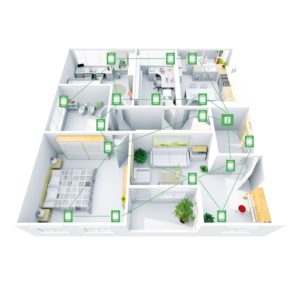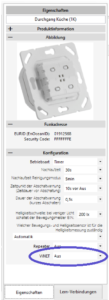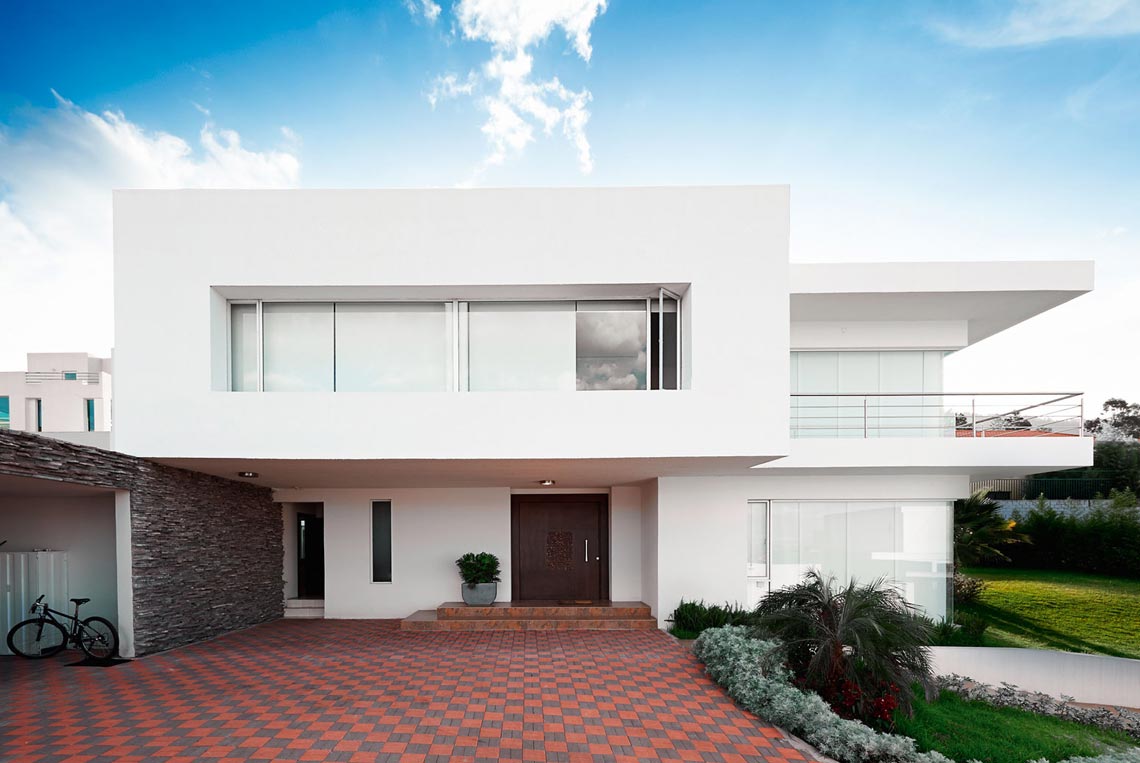Complete wireless coverage delivers EnOcean messages safely to their destinations
Issue 01-2017:
read all articles online
read as pdf
Some critics of modern wireless systems for building management or the Internet of Things believe that wireless is not as secure as cable. Wireless is more reliable than cable, as can be determined when EnOcean is used in combination with intelligent routing. Then there are alternative transmission routes, which an ordinary wired installation cannot carry out, of course!
In order to make EnOcean wireless more adaptable and thus more reliable than cable, the following problem must be solved: The EnOcean signals must be transported to the place where they’re needed, and this must be done in more than one way.
Reliable transmission
Let’s consider the situation in which all blinds on a floor or throughout an entire building are opened or closed by pressing a single button. All blind actuators have to receive the command with absolute reliability. Not a single one can fail to “hear” it. Or consider the situation in which the lights are turned on – possibly in combination with raising shutters – as an automatic response to the activation of a smoke detector. Especially in this case, all actuators have to be reliably supplied with the switching command of the smoke detector, even if individual devices in an installation may no longer be working due to a fire.
The continuous supply of all sensor signals to the heating or air conditioning controller is less critical yet equally essential for the daily operation of a building. That is, reliable wireless transmission in large residential buildings, for example from the second or third floor to the basement. These scenarios can be continued, and they all share the fact that a direct wireless connection between the transmitter – the central switch, smoke detector or climate sensor – and the receivers is not always possible for physical reasons. At this point, repeaters can be readily used, although they only permit two additional hops, that is, two additional wireless routes. Simple repeaters repeat all EnOcean messages and thus unnecessarily load the radio channel. Selective repeaters offer advantages here, although they are still limited to two hops and are extremely complex to configure. This complexity prevents them from being used on the mass market.
Complete wireless coverage
Targeted routing of individual EnOcean signals from the transmitter to the receiver remedies this situation. Without limiting the hops and without using repeaters. Instead, it employs a configuration for which the installer does not require any special wireless knowledge.
With its ViACT product family, ViCOS demonstrates that EnOcean routing is reliable and that the tool-based configuration of complete wireless coverage is not a complicated undertaking. ViNET names the routing functionality for EnOcean messages that can be activated on the ViACT actuators using the ViCOS ConfigTool.
ViNET ensures that EnOcean messages arrive where they are supposed to. It works without any central routing elements and is therefore resistant to the feared single point of failure, that is, the failure of a single device. Regardless of the structural conditions, ViNet Routing always works whenever
at least two EnOcean devices equipped with this tool are within their radio range. If three or more ViNET devices “hear” each other, alternative routes are activated. Of course, sensors and wireless switches continue to work as usual. Their signals are reliably passed on to their destinations via ViNET.

Figure 1 shows a scenario for a central switch “Z,” which turns off all the lights when leaving the house. All actuators for lights and blinds support ViNET Routing, and the sketched routes are established through automatic configuration. If an actuator fails, this does not cause ViNET to stop operating, since blind actuators, of course, also route the switching signal for the lighting actuators. Actuators for lights and blinds are placed in every room, and the best possible EnOcean wireless coverage is present throughout the entire house.

Reliable. Uncomplicated. Cost-effective.
The ViCOS ConfigTool, which the installer already uses for commissioning a wide variety of EnOcean devices, configures ViNET without complications. If ViNET is activated for devices (see Figure 2), these devices handle routing functions. The ConfigTool takes into account all EnOcean devices of an installation when defining the routes, even if they themselves do not participate in the ViNET routing. The tool uses the Product Label, Product ID, Device Description File and Remote Commissioning processes standardized by the EnOcean Alliance to communicate with the ViNET devices.
ViNET is an integral part of the VIACT product family but is not limited to ViCOS devices. ViNET can be implemented for devices of other manufacturers. The only requirement is that they are supplied continuously and fully support the EnOcean Alliance standardization.
New articles in Smart Home
Top articles




